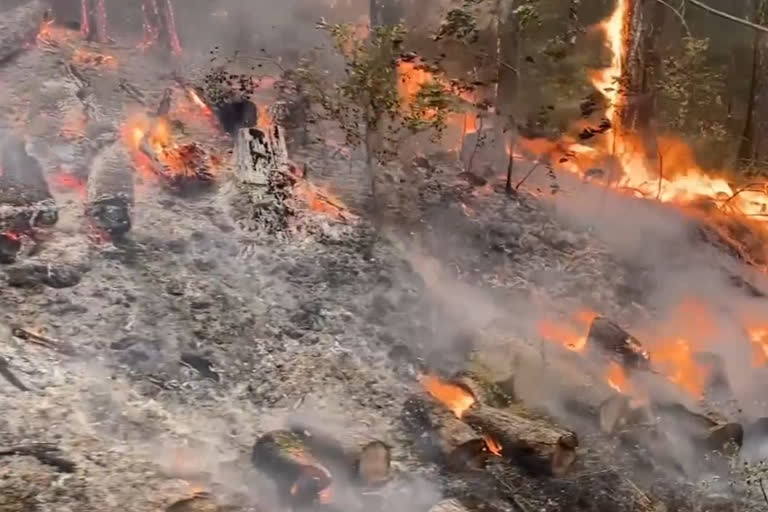California: 4 million acres (1.6 million hectares) burned this year by wildfires that have killed 31 people and incinerated hundreds of homes in what is already the worst fire season on record.
Flames have scorched an area larger than Connecticut and fire crews at a blaze in the wine country north of San Francisco were on high alert Friday as forecasters warned of extreme fire danger into Saturday.
Cal Fire Deputy Chief Jonathan Cox said wildfires have scorched 3.98 million acres in California since Aug. 15. That figure, which works out to more than 6,000 square miles (15,500 square kilometers), is astonishing even in a state that has had its fair share of fires.
"Unfortunately, we're at a historic moment where we are going to cross the 4 million acres burned mark in California this year. It's never happened before in recorded history," Cox said. "It can't be understated that we're hitting an unprecedented number of acres burned across the state. And unfortunately, we're just getting into some of the most critical fire months in California."
Powerful winds didn't materialize early Friday, allowing fire crews a chance to make some gains, but winds up to 30 mph (48 kph) were forecast to push through the hills of Napa and Sonoma counties as the Glass Fire, which exploded in size earlier in the week, threatens more than 28,000 homes and other buildings.
Winds were blowing at higher elevations on the western side of the fire and crews expected a long battle to keep flames from jumping containment lines and to prevent spot fires from leaping ahead to spark new blazes.
More crews and equipment were deployed in and around Calistoga, a town of 5,000 people known for hot springs, mud baths and wineries in the hills of Napa County about 70 miles (110 kilometers) north of San Francisco.
The area was also experiencing high temperatures and thick smoke that fouled the air throughout the San Francisco Bay Area.
Also Read: Trump, stricken by COVID-19, taken to military hospital
Numerous studies have linked bigger wildfires in America to climate change from the burning of coal, oil and gas. Scientists say climate change has made California much drier, meaning trees and other plants are more flammable.
"Our research also shows that as global warming continues in the coming decades, we can expect to see further intensification of these extreme wildfire weather conditions," Noah Diffenbaugh, a professor at Stanford University's Woods Institute for the Environment.
The Glass Fire is the fourth major blaze in the region in three years and comes ahead of the third anniversary of an Oct. 8, 2017, wildfire that killed 22 people.
Around the state, 17,000 firefighters were battling nearly two dozen major blazes. Virtually all the damage has occurred since mid-August, when five of the six largest fires in state history erupted. Lightning strikes caused some of the most devastating blazes.
The death toll increased to 31 people after a person burned in the LNU Lightning Complex died from their injuries, Cal Fire said in a statement. A cluster of fires sparked by lightning in mid-August in the San Francisco Bay Area was fully contained Thursday.
Fire officials said the Glass Fire was their top priority. Since erupting Sunday, the fire has destroyed nearly 600 buildings, including 220 homes and nearly the same number of commercial structures.
About 80,000 people were under evacuation orders and officials warned that more were possible. Fire and public safety officials asked people to remain vigilant, stay out of evacuation zones and quit demanding that officers let them back into off-limits neighborhoods.
About 150 miles (240 kilometers) to the north of wine country, the Zogg Fire, which also erupted during Sunday's high winds and grew quickly, has killed four people and destroyed 153 buildings.
The weekend was expected to usher in some cooling - or less intense heat - and long-range forecast models hinted at the possibility of rain.
Hurricane Marie, spinning in the Pacific southwest of Baja California, was expected to weaken by the middle of next week but leftover tropical moisture may be pulled northward and bring "impressive rainfall" to Northern California, forecasters said.
(AP)



